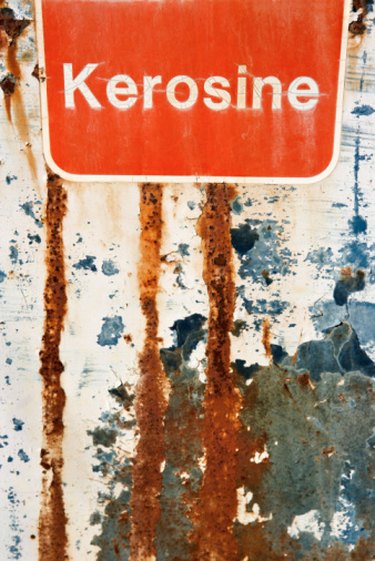
Kerosene is a combustible hydrocarbon liquid that is commonly used to power rockets and jet-engine aircraft, but it can also be used as a heating fuel. Canadian geologist Abraham Gesner discovered in 1846 that a clear, thin fluid could be made by heating and distilling coal in a retort. The fluid was an excellent lamp fuel, and he named it kerosene, meaning wax-oil. Although kerosene is still widely used as a heating fuel, it can also be used to lubricate watch cogs, bicycles and vehicle engines. The one job it is best suited for, however, is cutting glass.
Lubricating Glass
Video of the Day
Kerosene, along with other mineral oils derived from crude oil, can be used to lubricate intricate machine or engine parts, but certain machine oils exist that do the job much better than kerosene does. However, kerosene is still used by glass cutters to facilitate the smoothest penetration of the glass surface, lubricating the contact of blade and glass. The key to this is the kerosene's oil-base -- this protects the cutter blades from corrosion and softens the glass surface, preventing unnecessary and unwanted chipping.
Video of the Day
Cleaning Properties
Aside from being able to lubricate parts and machinery, kerosene is also a cleaning agent that evaporates after use -- this means that there is no leftover liquid or fluid that requires cleaning. Kerosene is commonly used to clean machinery parts, vehicle engines and everyday items such as bicycle chains. Any leftover kerosene that does not evaporate can be easily washed or sprayed away with water. Kerosene's solvent properties also make it adept at removing window stickers, candle wax and old dried lubrication on machine parts before relubrication.
Problems with Watches & Clocks
Using kerosene as a lubricant can cause more problems that it intends to solve. When lubricating a watch or clock interior, the kerosene can lubricate parts or cogs that don't need to be lubricated -- this quickens the interior's movement and can increase wear and tear on the device. The kerosene's liquid property also means that it can leak into different parts of the watch or clock that can discolor frontal features such as the dials or face. If the kerosene leaks into the wooden frame of a clock, the wood can stain and appear dirty or discolored.
- Inchem - International Programs of Chemical Safety: Kerosene
- Fantasy in Glass Glassworks: The Importance of Lubrication
- Southern Steam Trains: Lubricating Oil
- National Association of Watch and Clock Collectors: Kerosene Lubrication
- Health Protection Agency: Kerosene - General Information
- Indian Academy of Sciences: "The Insecticidal Properties of Kerosene and Lubricating Oil-Emulsions